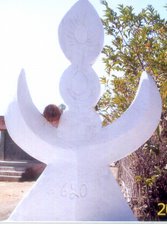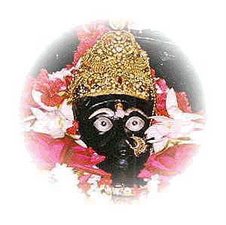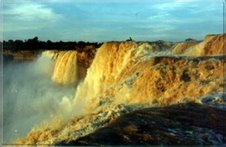Special Economic Zones — Colonization in a new form »
AWTW aricle on Salwa Judum
Posted by parisar on December 20th, 2006
Salwa Judum and India’s war against its own people
18 December 2006. A World to Win News Service. Chhattisgarh, in central India, is one of 13 states where the Communist Party of India (Maoist) is leading armed struggle based mainly among poor peasants and landless labourers, including adivasis, India’s tribal peoples.
On 13 December, for instance, Reuters news service reported, “Four policemen were shot dead when about 250 Maoist rebels made an attack in central India early on Wednesday, police said. The clash took place just outside a camp housing 1,000 tribal refugees in a forested village of the Dantewada district of impoverished Chhattisgarh state, 480 kilometres south of the state capital, Raipur. The dead included a police constable and three special police officers, locals who have been recruited to act as informers and assistants for the police in their battle against the rebels. Dantewada has become the epicentre of Maoist activity in India since the state government helped set up an anti-Maoist movement called Salwa Judum (Campaign for Peace) in the remote district last June. Around 50,000 tribespeople from 600 villages in the district have been settled in camps run by the Salwa Judum.”
The following is excerpted and slightly edited from a pamphlet published in India in April 2006 called Where the State Makes War on Its Own People: A report on violations of people’s rights during the Salwa Judum Campaign in Dantewada, Chhattisgarh, India.
Since June 2005, Dantewada District (formerly part of Bastar district), Chhattisgarh, has been in the news for an alleged uprising of adivasis against the Communist Party of India (Maoist). Most media and official reports described this movement, known as Salwa Judum, as a spontaneous and self-initiated reaction to “Maoist oppression”, and hailed it as a turning point in the fight against the Naxalites (as Indian Maoists are often called). At the same time, a few reports indicated that people had been displaced in large numbers and were living in miserable conditions in camps. While this was officially attributed to Maoist threats and retaliation against those joining the Salwa Judum, stray news also came in about the forcible emptying out of villages as part of the government’s anti-Maoist policy, and of excesses committed by members of the Salwa Judum and security forces. ………….
A 14-member team from five organizations conducted an investigation between 28 November and 1 December 2005 in Bijapur and Bhairamgarh blocks of Dantewada district, focusing specifically on the violation of human rights and the impact on people’s everyday lives. The organisations are: People’s Union for Civil Liberties (PUCL) Chhattisgarh, People’s Union For Civil Liberties (PUCL) Jharkhand, People’s Union for Democratic Rights (PUDR) Delhi, Association for the Protection of Democratic Rights (APDR) West Bengal, and Indian Association of People’s Lawyers (IAPL).
On the basis of the fact-finding, three facts stood out strongly, all of which ran counter to the government’s assertions: First, it is clear that the Salwa Judum is not a spontaneous people’s movement, but a state-organized anti-insurgency campaign. Second, it is misleading to describe the situation as simply one where ordinary villagers are caught between the Maoists and the military. The Maoists have widespread support and as long as people continued to live in the villages, it was difficult for the government to isolate the Maoists. Rather than questioning its own non-performance on basic development, the government has resorted to clearing villages on a large scale. Tens of thousands of people are now refugees in temporary roadside camps or living with relatives with complete disruption of their daily lives. Prospects for their return are currently dim. Third, the entire operation, instead of being a “peace mission” as it is claimed, has escalated violence on all sides. However, only the murders by Maoists are recognized, and the Salwa Judum and paramilitary operate with complete impunity. The rule of law has completely broken down.
Dantewada district, situated at the southern tip of Chhattisgarh, has borders with the states of Maharashtra, Andhra Pradesh and Orissa. It is divided into four tehsils (subdivisions) : Bhopalpatnam, Bijapur, Dantewada and Konta. The Salwa Judum and police operations originated in Bijapur tehsil, but have now spread to Konta. The people inhabiting the district are predominantly tribal – mostly Maria Gonds and Dorla – accounting for 82% of the rural population. Scheduled Castes (people of the lowest castes) account for about 3% of the population and the rest are OBC (Other Backward Castes) communities like the Sundis, Kallars, etc. A number of immigrants from other states, mostly traders, but also lower level officials, school teachers, health workers etc., have settled in the small market towns like Bijapur, Sukma, Konta and Dantewada. The Bailadilla mines hardly employed any local adivasis, with the result that the mining town of Kirandul is a non-tribal enclave, with little connection to the surrounding countryside.
This picture of a large number of fairly small tribal villages, and a few large villages, with non-tribal households is supported by the census data. Of the 1,220 villages in the district, 455 are wholly tribal and another 458 are more than 90 percent tribal, i.e. 75 per cent of the district’s villages are almost completely tribal. Only 76 villages, or approximately 6 per cent of the total, have less than 50% tribal population. The larger villages serve as local markets and it is these that tend to have greater non-tribal populations.
About 38 per cent of the rural area in the district is outside the village and part of forest land. The 2001 Census states these forests have 202 villages, of which about 90 are inhabited. What is pertinent is that these villages have no land rights and are at the mercy of the Forest Department. (Dantewada has one National Park, Indravati, and two wildlife sanctuaries, Bhairamhgarh and Pamed.) Other than these, the rest of the villages occupy 62% of the district, but again 46% of this is also designated as ‘forest’. Hence in total, about two-thirds of the district belongs to the Forest Department, at least on paper. Some of these forest areas may have been village lands earlier. For instance, in the areas under the Bhopalpatnam and Kutru zamindaris (a form of big landlord rule), feudal oppression during colonial times forced residents to flee their villages. After 1947 and the abolition of Zamindari, these residents came back to find their lands notified as forests.
The villagers are heavily dependent on both agriculture and forests. Of the total village land, barely 29% land is cultivated, and as said earlier, nearly half is designated as forest and the rest is either uncultivable or wasteland. The average landholding per household works out to 1.01 hectares, i.e., 2.5 acres. Irrigation being by and large absent (barely 2% have some sort of irrigation), only a single crop is possible. The shifting of villages due to economic reasons is therefore common.
Given the rain-fed agriculture, the collection and sale of non-timber forest produce at weekly haats (markets) or to agents is an important source of local income, a fact that underlines the people’s dependence on the forest, and their forced interaction with Forest Department officials and traders.
Literacy levels are low in rural areas at 29% men and 14% for women, with an overall rural literacy rate of 21%. Yet this presents a partial picture. In Bijapur tehsil for instance, there are only 52 villages in which more than 25% of the population is literate, and 35 villages have no literates at all. This is related to the availability and the quality of schools in the district: out of the 1,220 villages, 214 do not have even a primary school and, of these, for 107 villages the school is more than 5 kilometres away. The presence of a school building in the village, moreover, does not ensure that teachers are available.
The situation is distinctly worse regarding health facilities. Out of the 1,220 villages, there is no medical facility in 1161 villages. A primary health centre exists only in 26 villages; a private registered medical practitioner in 17 villages, a government subsidised one in 12 and a community health worker in 122 villages. A telling comment on the inadequacy of the health infrastructure and the health and well being of the people is provided through the studies conducted by Chhattisgarh PUCL in earlier years.
As early as 1987, an investigation into repeated reports of blood dysentery in Bastar that claimed many lives each year revealed that people had very limited access to potable water. A more recent study during 2004 revealed that things had not really improved very much in the last 18 years.
Natural resources and the rhetoric of development
While the people of Dantewada are extremely poor, their land is extremely rich, both in terms of minerals and forests. When the government talks of “development”, it appears to have in mind the development of these resources for private profit as against the development of its people. When organizations and movements have pointed out that the two are not synonymous, and that the way mining and other industrial activity has been practiced in the past has resulted in the displacement and consequent pauperisation of tribals in this region, they are called “anti-development” .
These efforts at exploiting natural resources have gained momentum since the formation of the state of Chhattisgarh in 2001. The new state government has entered into agreements with several industrial houses such as the Tatas and Essar to set up steel plants on land leased from the state. Plans are afoot for intensified mining with the Essar group setting up a pipeline to transport 8 million tonnes of iron ore slurry per annum to the Vishakhapatnam port. A National Mining Development Corporation steel plant has already been initiated at Nagarnar village in Bastar, despite local protests.
But nearly six decades of official boasts of “development” has little to show for it. In fact, while literacy and health indicators are miserable, the one indicator that is thriving is the ratio of police stations to population. A cursory look at the infrastructure for development shows that while Dantewada boasts of 37 police stations across the district for its 374 panchayats (councils), with 33 new police stations to come up, there are only 26 primary health centres, 26 higher secondary schools, and four degree colleges in the district.
More money is being allocated for security and anti-Naxal operations than for development. Indeed, what passes for development in official parlance has a security imprint. The physical infrastructure to be built includes – other than police stations – roads, bridges, etc. While roads, bridges and electrification will no doubt benefit ordinary people, it is evident that their needs are hardly what is behind the bringing in of the Border Roads Organization for building roads in the region. An official Work Proposal from the Collector’s office states that the real rationale of road building and widening is to flush the Maoists out from the jungles and make troop movement in the area easier.
To summarize, the adivasis and other local inhabitants of the region have little possibility of actual development and are acutely aware of their marginal and exploited status. For the overwhelming majority in the villages, agriculture is unviable since plots are small and there is no investment in irrigation, there are severe restrictions on the use of forests partly due to the creation of wildlife reserves, the prices of forest produce are deliberately kept low by traders and the government, and the government machinery treats them with apathy and contempt. On the other hand, there is a small minority – mostly trading families, shopkeepers, members of the bureaucracy, lawyers and others living in the small towns, and some rich tribal leaders – who have gained through politics or corruption involving illicit felling of trees and who want large development projects.
In a situation where the state claims rights to the land and the people who live on that land are treated as peripheral to the national economy, a mass base of the Maoists challenging this status quo forms a threat to the state’s plans for heavy industry and profits in this region.
Movements against the dominant development paradigm and rampant corruption in the administration continued throughout the 1980s and 1990s. Many of these were local in character. These included the movement against pine forestation to feed the Ballarshah Paper Industries, the movement of the women of Asna near Jagdalpur against forest enclosure and monoculture forestry, and the resistance of the tribals of Mawlibhata to a proposed steel plant on their land. In recent times, the most serious challenge to the dominant model of development has come from the CPI (Maoist) formations.
The Maoist movement
The Telengana region of Andhra Pradesh, bordering Dantewada to the South, has a long history of peasant struggles dating back to the 1940s. By the 1970s, the struggles of the peasantry were led by a number of Marxist-Leninist parties, including CPI (ML) People’s War (PWG), a precursor to the CPI (Maoist). Around 1980, PWG started an organization in the area of present-day Dantewada district, called the Dandakaranya Adivasi Kisan Mazdoor San-gathan (DAKMS). The earliest issues taken up by these organizations revolved around oppression and exploitation by “outsiders”, primarily the forest and revenue departments, the police, and moneylenders. They mobilized against the practice of forest officials levying fines and demanding illegal payments in money and in kind for collection of minor forest produce by locals, for use of village forest areas for cultivation, or felling of trees for house-building. Revenue officials also demanded similar payments for extending cultivation.
A second initiative was the creation of sanghams in villages. These were intended to gradually replace the traditional structures of authority at the village level, articulate issues of the village and settle disputes. Sanghams exist in many villages of Dantewada today. These sanghams are currently one of the major targets of the Salwa Judum as they challenge the traditional structures of local authority, and are identified with the Maoists. Even the District Collector states that “the real strength [of the Maoists] lies in sangam membership who are from among the villagers and comprise none other than the illiterate common man who like others takes care of his family through earning daily wages.”
The region has a history of political opposition to the Maoists from the dominant sections of society (both tribal and non-tribal) in the form of the Jan Jagran Abhiyans. The acquiring of lands from large holdings and their redistribution to landless households by peasant organizations led to the creation of a section unhappy with the Maoists. Additionally, the downsizing of the role of the headman and the priest due to the creation of sanghams also contributed to the backlash. Traders and contractors in trading towns and tehsil headquarters such as Bijapur and Bhairamgarh – who were mostly non-tribals – added to this constituency against the Maoists.
Around May-June 2005, another mobilization against Maoist organizations using local elites, both adivasi and non-adivasi, and the state forces began. Mahendra Karma, the Congress Party MLA (state legislator), was again at its forefront very soon. This time round it was named Salwa Judum. Salwa is the Gondi word for the water that is sprinkled on a patient to drive an illness out, while Judum is the word for collective hunts. Salwa Judum thus means the purification hunt, seemingly meant to cure tribal society of the Maoist “illness”. In official circles, this campaign is also referred to as Jan Jagran Abhiyan as well as Salwa Judum, probably indicating both the continuities as well as differences from the Jan Jagran Abhiyans of the past.
The differences are crucial: For one, the Salwa Judum is over a wider area, involves much more intensive use of state power and is centrally part of the central and state governments anti-Naxal policy. Two, the attacks and killings are more frequent and far more brutal, and its impact on the daily life of the local people far more devastating.
The emergence of the Salwa Judum
There is an ambiguity about the Salwa Judum’s origins. There are two somewhat conflicting explanations. The Salwa Judum is understood to have started either entirely as an anti-Maoist civilian initiative arising out of local social contradictions or alternatively, as an operation organized right from its inception as part of the adminstration’ s long-term counterinsurgency plans. Actually, the question about its origins is secondary. What’s more important is one, the social basis of the Salwa Judum; two, the extent of state patronage it is currently getting as part of the Indian state’s anti-Naxal agenda; and three, the brutality people are facing as a consequence. In fact, the Salwa Judum could not have reached its present dimensions without the extent of state support it is getting.
Accounts from the three different sources suggest that the Salwa Judum began at the local level over a variety of issues including opposition to the sanghams and redistribution of village land. The Salwa Judum leadership represents those who consider themselves victims of Maoist violence. These include those sections of tribal and non-tribal society who have been adversely affected by the Maoists’ policies, for example, those in traditional positions of authority within the village, those whose lands have been redistributed, those traders whose profits have been hit by the struggles over tendu patta (leaves gathered by tribal people, sold to traders, and ultimately used to make cigarettes) and forest producen, etc. Lakshman Kashyap, a local Salwa Judum leader told us that the Salwa Judum leadership primarily consists of (a) some headmen, sarpanches, and panches along with their clans people, and (b) non-tribal immigrants, both of whom were mobilized against the Maoists. Even official accounts do not deny this composition of the leadership of the Salwa Judum. At the grassroots level it is also apparent that contractors, transporters and traders from small towns of Dantewada district, who have much to gain from industrialization in the region, also play a prominent role in the Salwa Judum.
However, what’s important is that the state promptly exploited the situation. It’s crucial never to forget that the Salwa Judum could not become what it has without the extent of state support it is getting. For instance, the district collector told us that of the 150-200 Salwa Judum meetings that had been held till December 2005, he himself had attended 75 percent. Other sources also make it evident that the state has played an active role in channelising and propagating the anti-Maoist opposition among sections of the population, thus fuelling the Salwa Judum as part of its all India anti-Naxal policy.
“This is what happened in Bangapal, sir. On 3rd August we held a meeting in Munder village. Villagers from Munder ran away to the hills. The Naga Batallion went to the hills, caught them and brought them back, and made them join the Salwa Judum. Those who were unwilling to join were arrested. I don’t know everything. I don’t know how many people have been made to join and how many arrested.”
- Lakshman Kashyap, local leader of Salwa Judum, in an interview
No clearer account of what happens during a Salwa Judum operation is available. Those who don’t join the Salwa Judum are forcibly brought in by the Salwa Judum members, the police and the Naga Indian Reserve Brigade (IRB – an Army Unit). Both our fact-finding and an earlier fact-finding report (November 2005) by the Communist Party of India (CPI), point to a consistent pattern. First, Salwa Judum meetings are organized in villages that are known to support the Maoists. The audience for these meetings are transported by buses hired or procured by the administration. Money for this comes from the central government. Often, various politicians address these meetings. Processions, called padyatras, go from the larger villages where camps are located and are accompanied by the security forces and sometimes, by the Collector or the SP (Special Police). In the course of these meetings, the houses of sangham members or ordinary villagers are burnt and their cattle, pigs, poultry and other household goods looted. Since the houses in these villages are scattered, villagers are often unable to collectively resist these attacks. However, some villages do resist attacks, aided by their own sangham members and other Maoists. Sometimes people are killed, but no official report is ever registered for those killed by the security forces. Maoist killings are however, recorded and the family compensated in many cases. People from defeated villages are then forced to come and live in the camps, of which the administration itself claims to have set up 17. They are unable to continue with their agricultural activities and their normal existence, and are expected to go on Salwa Judum processions and meetings in other villages and be part of other attacking parties. Additionally, they are expected to keep an eye on people known to be associated with the Maoists.
Attacks by Salwa Judum
Unlike the Jan Jagrans of 1990 and 1998, when some mukhiyas (council heads) were mobilised against the Maoists, now the attacks by the Salwa Judum on villages are being carried out with the assistance of the CRPF and the Naga Indian Reserve brigade, accompanied by a small contingent of civilians. The Naga IRB, feared by the locals, are in fact known to prefer to conduct their raids by themselves.
While we do not have any independent confirmation of this, there are serious allegations of rapes by security forces and Salwa Judum activists. Maoists have listed 31 cases of rape, of whom six women were also murdered since the Salwa Judum began in June 2005.
There also are reports that children and old people are being beaten. Villages are forcibly cleared of people and their cattle. In most villages that had been attacked, we found that entire villages were completely empty, except for the occasional old person and women in some cases. We also chanced upon villages where people had finally decided to “surrender” following repeated attacks by the Salwa Judum and the security forces.
The following is one of a number of accounts of an attack on a village by the Salwa Judum.
Kotarapal village
Kotarapal is a large village divided into Joona Kotarapal and Navin Kotarapal, which was a stronghold of the Maoists. Kotarapal was attacked four times by the Salwa Judum. The first was on 18 June 2005, following a Salwa Judum meeting at Matwada (a large village where the weekly market is held) in which about 3,000 people participated. The meeting was addressed, among others, by Mahendra Karma Majhi, mukhiya (council head) Korsa Sukulu and Lekam Jilaram. People from villages close to the Indravati such as Sattuva, Bail and Dharma also participated. From the meeting, about a thousand people marched to Kotarapal village, a few kilometres away. Forewarned villagers had already sent the aged and the children out of the village; young men and women stayed back. When the Salwa Judum procession neared the village, it was attacked by the villagers and sangham members. In the melee that ensued, two people (Micha Dashru of Bandeparre and Mohan Singh of Naimed) died. Sangham members detained 12 people, of whom 11 were later released. Bhuvneshwar Thakur of Jangla remained in their custody and he was killed on 26 June.
Following the 18 June incident, a Salwa Judum meeting took place in Bijapur, called by Mahendra Karma, Prabhari mantri (Minister in Charge of Dantewada district) Kedar Kashyap and Rajendra Pambhoi, MLA. It was here that the Jan Jagran Abhiyan became “Salwa Judum”. On 1 July, Kotarapal was attacked, for the second time, by a combined force of the District Armed Force and the Central Police Reserve Force, which was led by the Inspector-General, Bastar region, the S.P. (police head) Bijapur, as well as Mahendra Karm (a Salwa Judum leader). Since most of the villagers and sangham members had escaped to the jungle, the attackers looted and burnt their houses and killed their cattle and livestock. Two elderly peasants, Uikay Sannu and Vanjam Mangu, were killed and an old woman was fatally injured.
The third attack took place on 11 August, in which Lekam Budhram (35) and Aatam Bodhi (30), both sangham members, were killed by Naga IRB soldiers. It appears that in this attack, as well as a fourth attack that followed on 12 September, Naga IRB soldiers took a large number of people to Matwada camp. According to the CPI fact-finding report, 48 youths who were allegedly sangham members were picked up from Kotarapal and made to surrender before Mahendra Karma on 13 October. Since then they have been detained in Bhairamgarh police station. According to some people from the village, whose families had refused to live in the camps, their mukhiya had been pressurizing them to leave the village. Many people had already run away into the forests. The last two families from this village were attacked by the Naga IRB and the men taken away to nearby Jangla and tortured. The village now lies completely empty.
Subscribe to:
Post Comments (Atom)







No comments:
Post a Comment